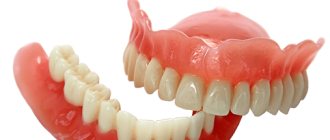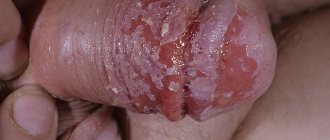What is angioedema of the larynx? Most likely, most respondents not related to medicine will not be able to answer this question. But if you voice another name for this condition - Quincke's edema - everything will fall into place.
Angioedema of the larynx is an acute, rapidly developing edema of the deep layers of the skin, subcutaneous tissue and mucous membrane. Angioedema of the larynx is very dangerous, because in the absence of emergency help, the airways can completely block, leading to asphyxia and death.
Angioedema of the larynx is an aggressive reaction of the body to external stimuli. When interacting with an external factor, the body releases biologically active substances into the blood as protective measures - histamine, bradykinin, etc. This whole process occurs with the expansion of blood vessels and an increase in their permeability. Ultimately, the lymph from the capillaries leaks into nearby tissues, causing severe swelling. The mechanism of angioedema formation is similar to the appearance of allergic urticaria. Only in the latter case, the vessels dilate in the upper layers of the skin, so urticaria is not dangerous, but in case of angioedema of the larynx - in the deep layers of the skin.
This is a relatively new medical condition. It was first described in his works at the end of the 19th century by the German physician Heinrich Quincke. Swelling of the throat develops very quickly - several hours or even minutes can pass from the moment of interaction with the irritant. Therefore, treatment and assistance for swelling of the throat should be urgent.
Symptoms of Quincke's edema.
The first sensations that a person experiences are a burning sensation and a slight tingling sensation at the site of future swelling. Then swelling occurs. Dangerous swelling appears on the face (lips, eyelids, cheeks) and neck. The tongue is very swollen. It gets to the point where a person’s face becomes like a ball, and the patient is not even able to fully open his eyes.
In the first minutes after interaction with the irritant, symptoms may appear in adults and children, such as lacrimation, problems breathing through the nose, the appearance of a dry cough and hoarseness in the voice. Another important symptom of angioedema of the throat is “wheezing”, heavy breathing. All these symptoms very quickly gain momentum and become intense. It’s as if a person was bitten by a swarm of bees - this is what angioedema looks like externally.
In addition to external changes, this dangerous condition has other symptoms: decreased blood pressure, excessive sweating, and rapid heartbeat.
Angioedema of the larynx is the most dangerous manifestation of angioedema, when swelling affects the throat and airways. An emerging cough, sore throat, difficulty swallowing, a feeling of a lump in the throat, problems with speech - all these symptoms indicate incipient asphyxia (suffocation).
When the first symptoms of Quincke's edema appear, you need to call an ambulance so as not to waste precious time. If the swelling of the larynx is not relieved soon, the person may die. Even if death was avoided and treatment of angioedema was not delayed, prolonged absence of normal breathing can lead to damage to brain activity.
When is it necessary to see a doctor?
You need to see a doctor:
- if Quincke's edema occurred for the first time;
- if the area of the face, neck, scalp is affected;
- if the swelling spreads to several parts of the body;
- if there are signs of swelling of the internal organs (difficulty breathing and changes in voice timbre, abdominal pain, bladder spasms, etc.).
In the case of a mild form of an allergic reaction that does not have a large area and does not worsen the general condition of the patient (for example, a local reaction to an insect bite), it is permissible to take an antihistamine and observe the site of swelling. Applying ice and cold compresses have a good effect. Mild forms often go away on their own within 1-2 days and do not cause complications.
Causes of laryngeal edema.
In addition to knowing about the first signs of angioedema, you need to understand why, in principle, this dangerous condition can arise.
Typically, angioedema is of an allergic nature, but there are cases when the human body is affected not by allergens, but by other external factors.
The most common causes of angioedema of the larynx are:
- certain foods (for example, eggs, chocolate, etc.);
- plant pollen during the flowering period;
- fungi;
- household chemicals;
- taking medications;
- insect bites;
- dust;
- pet hair or excretions;
- exposure to open sun;
- hypothermia;
- stressful situations;
- digestive problems;
- heredity.
Diagnosis of Quincke's edema / angioedema
To clarify the diagnosis, it is important to consult an allergist, and an experienced immunologist will tell you what needs to be taken so that allergy treatment is systemic. It is imperative to identify the factors that provoke the onset of the disease. For example, you need to find a connection with taking some medications, food, and so on. This connection can be further confirmed using allergic skin tests.
It is necessary to evaluate using special tests:
- general blood and urine analysis;
- determine the functional activity and level of C1 inhibitor;
- carry out allergy tests;
- to clarify biochemical blood parameters, levels of C4, C1q and C2 components of the complement system.
In this case, it is necessary to exclude intestinal diseases, autoimmune diseases, blood diseases, and conduct stool tests for helminths.
Types of edema.
There are several types of Quincke's edema.
Angioedema can be hereditary or acquired. Hereditary angioedema is a rare genetic disease that was first described at the end of the 19th century and is characterized by recurrent edema. If a mother or father has this diagnosis, the probability that their child will be born with the same diagnosis is 50%. With timely prevention and proper treatment, the patient’s attacks rarely occur, and the patient lives quite well with this diagnosis. Cases of acquired disease are quite small, and are most often observed in elderly patients.
Depending on the cause that caused Quincke's edema, allergic, non-allergic and idiopathic edema are distinguished when the cause of the condition could not be determined.
Sources
- Angioedema symptoms & treatments - Illnesses & conditions [Electronic resource] // NHS inform.
- O. B. Pavlov, D. E. Bychkovsky, A. A. Poprotskaya, E. M. Suschaya. Quincke's edema [Electronic resource] // Educational Institution "BSMU", Institution "3rd City Clinical Hospital named after. E.V. Klumova.”
- Stuart I. Henochowicz, David Zieve, Brenda Conaway. Angioedema [Electronic resource] // medlineplus.gov, 2022.
- Angioedema [Electronic resource] // Wikipedia.
- S.I. Bardenikova, S.Yu. Snitko, O.B. Dovgun et al. Features of the clinical picture and course of acute allergic reactions (urticaria and Quincke's edema) in children // RMZh. 2019;1(II):71-76.
First aid for Quincke's edema.
How to relieve Quincke's edema? The first thing you should do when you find yourself next to a person with signs of angioedema is to call an ambulance.
What to do in case of Quincke's edema before the doctors arrive?
- First, unbutton the patient's clothes, loosen the tie, remove chains, beads, etc., thereby ensuring air flow. If you are indoors, open a window to let fresh air in.
- Make the patient more comfortable and try to calm him down by saying that doctors will arrive soon and begin treatment. This condition puts the patient into shock, which only worsens respiratory failure.
- If the problem began due to contact with an allergen, eliminate it if possible.
- Give the patient a tablet of any antihistamine that is in your home medicine cabinet. If the person cannot swallow, crush the tablet and place it under the person's tongue.
- Give the patient food more often if he can swallow, preferably with mineral water.
- If swelling is caused by contact with an allergen, give the patient activated carbon, Enterosgel or Polysorb to reduce the concentration of the allergic substance in the body.
- The patient's feet should be kept warm. You can place them in a bath of warm water or wrap them well.
- Place any vasoconstrictor drops into the patient's nose.
- It is necessary to measure the patient's blood pressure, and if it falls below 90, it is necessary to administer adrenaline to the patient.
Even if the patient feels better as a result of the measures provided, under no circumstances should one refuse medical care.
What forms of angioedema exist?
HAE – hereditary angioedema
HAE (hereditary angioedema) is a dominant autosomal disease. It is characterized by the irregular occurrence of angioedema in any area of the body. This complement-dependent angioedema accounts for no more than 2% of all cases.
It is very important to diagnose the disease in a timely manner using a screening test. If the values are normal, the patient does not have HAE. This happens in 96% of cases: in this case, there is no need for further diagnosis.
Angioedema can be caused by ACE inhibitors: the disease develops from the first days of use and continues to worsen over several months of regular use of the drug. Foci of Quincke's edema can appear in the area of the tongue, lips, larynx, neck, and pharynx. In some cases, intestinal edema develops, without any special external manifestations on the skin and visible mucous membranes, but accompanied by abdominal pain.
Prevention of angioedema, which is caused by ACE inhibitors, consists of complete abstinence from taking all drugs of this class. Patients need consultation with an allergist; in addition, they must always have with them a bracelet or document informing them about the disease and the specifics of treatment.
PAO – acquired angioedema
Patients may also experience acquired C1 inhibitor deficiency. In this case, the clinical picture of the disease does not include a burdened hereditary history, and the disease begins to manifest itself after 40 years. Against the background of the immunodeficiency virus, acquired complement-dependent edema of lymphoproliferative diseases, multiple myeloma, chronic hepatitis B and C can occur. PAO often appears several years before the onset of the underlying disease.
What symptoms are characteristic of Quincke's edema?
The main symptom is limited and painless swelling of the mucous skin, the membrane of subcutaneous adipose tissue, which causes a feeling of distension of the skin. The disease can occur spontaneously or under the influence of triggers - provoking factors (stress, trauma, acute viral infection, surgery, alcohol, ACE inhibitors, estrogen drugs).
Quincke's edema can begin unexpectedly. Within a few minutes, swelling appears, with sharply defined borders of a pale color. The size of the swelling can vary: from a coin to a child’s palm; it can last for several hours and then disappear without a trace.
Quincke's edema often occurs in the area of the tongue, eyelids, lips, ears, soft palate, hands, feet, and genitals. Some people (no more than 25%) experience swelling of the trachea, larynx and large bronchi: it is characterized by hoarseness, a feeling of lack of air and a “barking cough”.
The patient experiences only skin tension in the area of edema: there are no other sensations, not even itching. But when pressed, a hole does not appear. Quincke's edema can occur with typical urticaria rashes. The appearance of edema in the bladder mucosa can lead to difficulty urinating, and in the intestinal mucosa - to abdominal pain.
Swelling of the trachea, pharynx, and larynx is the most dangerous and is observed in every fourth case. Characteristic features are: sudden anxiety, aphonia, difficulty breathing, hoarseness, and in some cases even loss of consciousness. During examination of the mucous membrane of the throat, swelling of the palatine arches and soft palate can be observed, the lumen of the pharynx narrows, and there may be a threat of acute lack of air - asphyxia. In this case, emergency medical intervention is required.
How can angioedema be diagnosed?
To clarify the diagnosis, it is important to consult an allergist, and an experienced immunologist will tell you what needs to be taken so that allergy treatment is systemic. It is imperative to identify the factors that provoke the onset of the disease. For example, you need to find a connection with taking some medications, foods, etc. This connection can be further confirmed using allergic skin tests.
It is necessary to evaluate a general blood test, urine test, determine functional activity and the level of C1 inhibitor, conduct allergy tests, clarify biochemical blood parameters, levels of C4, C1q and C2 components of the complement system. In this case, it is necessary to exclude intestinal diseases, autoimmune diseases, blood diseases, and conduct stool tests for helminths.
What is needed to treat angioedema?
Treatment of the hereditary form of angioedema is impossible without medications that are prescribed to enhance the body’s production of the missing inhibitor (currently not yet registered in Russia). The main task is to identify the root cause of the disease and eliminate it.
For treatment you can use:
- attenuated androgens;
- tranexamic acid;
- fibrinolysis inhibitors;
- fresh or fresh frozen aminocaproic plasma;
- various diuretics.
If the patient is diagnosed with idiopathic angioedema (with an unknown cause), it is necessary to use modern antihistamines for a long time. The choice of one of the antihistamine non-sedative drugs will be influenced by a consultation with an allergist, at which the patient’s individual characteristics and reaction to the new generation drugs will be determined.
The use of antileukotriene drugs may be necessary. If a severe course of the disease is initially diagnosed, it is necessary to use GCS, gradually reducing the dose to the minimum effective. If after using all of the above treatment methods there are no positive results, you can perform blood plasmapheresis, treatment with cyclosporine, use hydroxychloroquine, sulfasalazine, thyroxine, warfarin, methotrexate.
How to properly prevent the disease?
If the cause of angioedema is a drug or food allergy, you will need to consult an allergist, at which the specialist will recommend avoiding foods or medications that cause swelling.
All patients with HAE need to be treated for emerging foci of chronic infections, because with their exacerbation, the development of angioedema may occur. It is also advisable to exclude the use of oral contraceptives that contain estrogens, ACE inhibitors, including plasminogen activators.
Specialists at the Gorbakov Clinic advise following a strict diet (excluding all allergens), eliminating allergens from the patient’s environment, and taking preventative antihistamines during contact with various allergens or when plants are blooming.
Experienced allergists and immunologists at the Clinic will conduct professional diagnostics and prescribe adequate treatment, after which you can quickly and safely get rid of the symptoms of the disease and return to your usual way of life.
Quincke's edema is an allergic disease that is characterized by lightning-fast development and an increase in symptoms. Angioedema can affect any part of the body, which naturally causes significant inconvenience to patients. If you have ever experienced similar symptoms, or anyone in your family has suffered from angioedema, we recommend that you immediately seek advice from an allergist-immunologist, who will select the optimal course of treatment or recommend preventive measures.
Treatment of angioedema of the larynx.
Treatment of angioedema consists of two stages. The first is emergency care, the second is hospital treatment. Before starting treatment, the cause of angioedema is determined, and then a treatment regimen is prescribed. This may include:
- taking antihistamines (“Suprastin”, “Loratadine”, “Tavegil”);
- corticosteroid drugs (for example, Prednisolone, Dexamethasone, Nasonex, Celeston);
- diuretics (for example, Furosemide);
- enterosorbents for removing allergens and toxins (for example, Multisorb);
- enzyme preparations (“Pancreatin”, “Festal”);
- administration of a C1 inhibitor, a blood protein whose deficiency leads to non-allergic angioedema;
- administration of fresh frozen plasma (for non-allergic edema);
- administration of androgens - sex hormone preparations (for non-allergic edema).








